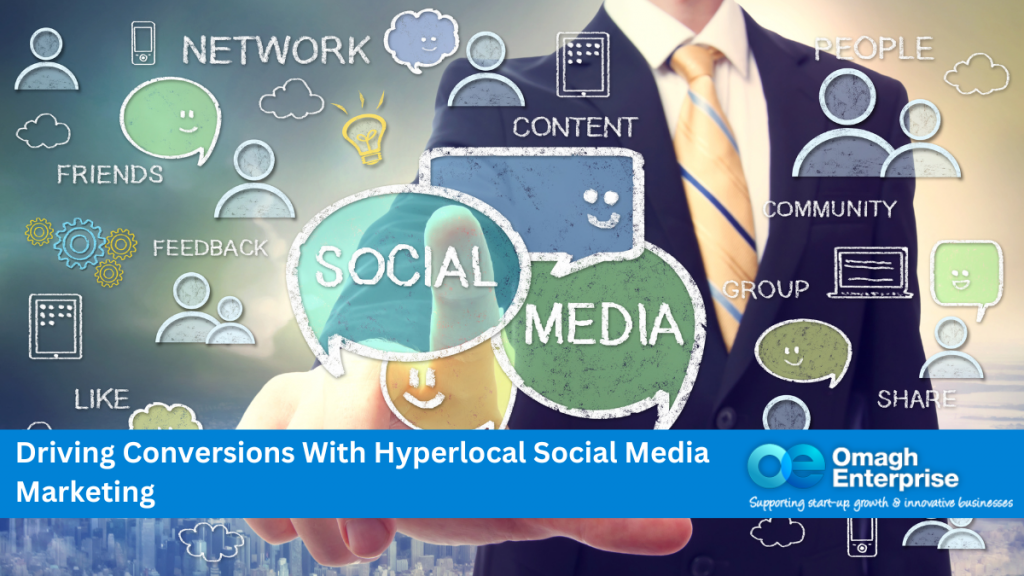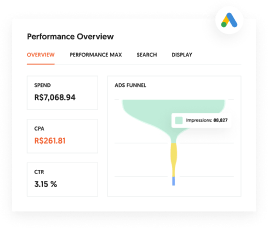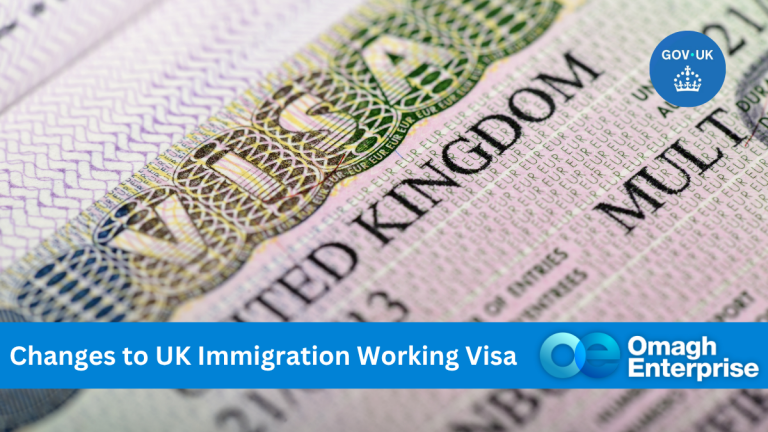Hyperlocal social media marketing is a powerful strategy hidden in plain sight. This concept is transforming how businesses interact with their customers and skyrocketing conversions.
You might be wondering, “What’s so special about hyperlocal?” or “Isn’t all social media marketing pretty much the same?” Stick with me, and you’ll discover why hyperlocal social media marketing isn’t just a buzzword, but a game-changer for your business.
Imagine this: You’re walking down the street of your hometown, and your phone buzzes with a notification. It’s a customized offer from the coffee shop you just passed—a deal that seems almost too good to be true. This isn’t random—it’s hyperlocal social media marketing at its finest. In an era where generic ads flood our feeds, hyperlocal strategies stand apart, delivering content that’s relevant and right on your doorstep.
But let’s dig deeper. What is hyperlocal social media marketing exactly? How does it stand apart from the usual social media marketing playbook, and how can it elevate your business to new heights of engagement and sales?
As we explore these nuances of hyperlocal social media marketing, keep this in mind: 76 percent of users have purchased a product based on a brand’s social media post. The influence is undeniable, from immediate purchases to deferred in-store sales and online buying.
Let’s dive into hyperlocal social media marketing and unlock the secrets to attracting your local audience like never before.
What Is Hyperlocal Social Media Marketing?
Hyperlocal social media marketing is a marketing strategy that targets a specific geographic area to connect with potential customers. It’s like your neighborhood coffee shop in the marketing world—small, targeted, and community-focused. This strategy zooms in on a very specific geographic area, like your city block or neighborhood. The goal is to connect and engage with potential customers right in your own backyard.

Imagine this: You’re a small business owner; maybe you run a cozy bookstore or a lively empanada truck. Hyperlocal marketing is your secret weapon. By focusing on people in your immediate vicinity, you’re not just advertising—you’re becoming part of the community’s daily conversation.
So, how do you do it? It’s all about creating content that resonates with the local vibe. Hosting a book reading? Share it. Got a new empanada flavor inspired by a local festival? Let everyone know. Highlight local landmarks, shout out to fellow businesses, and be a voice in local events.
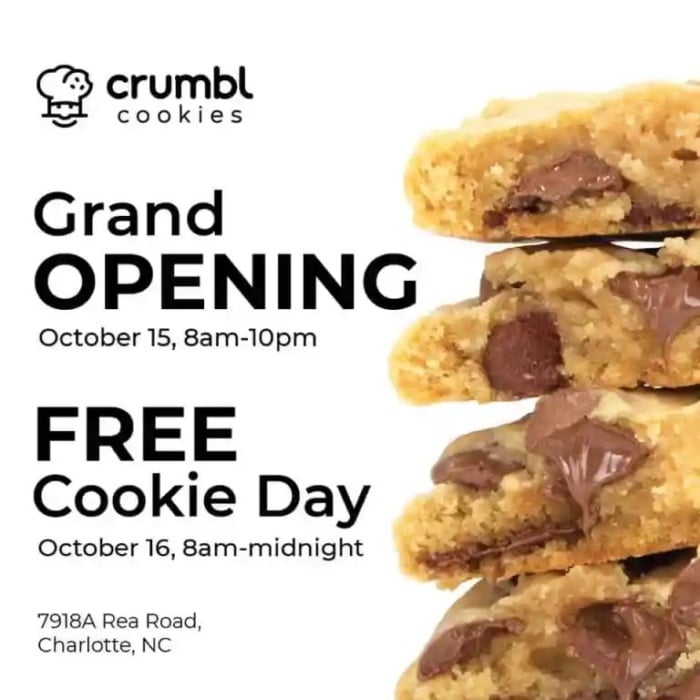
Source: Charlotte on the Cheap
Hyperlocal isn’t just for the small players, though. Big brands can use it too, especially when launching new locations or promoting local events—like when Crumbl Cookies launched a new location in Charlotte, NC. They know how much hype free cookies can make, so offering them for their newest location was a shoe-in way to get customers talking. It’s all about creating that personal, neighborhood feel—no matter your size.
Are You Using Google Ads?Try Our FREE Ads Grader!
Stop wasting money and unlock the hidden potential of your advertising.
- Discover the power of intentional advertising.
- Reach your ideal target audience.
- Maximize ad spend efficiency.
Benefits of Hyperlocal Social Media Marketing
Let’s get into the meat of why hyperlocal social media marketing is such a big deal, especially with 77 percent of small businesses using social media to connect with customers. Here are the key benefits that make this strategy a must-try:
Creating a Sense of Community and Connection
Now, this is a game-changer. By shining a spotlight on your local landmarks, fellow businesses, and community events, you’re doing much more than just advertising—you’re weaving your brand into the fabric of daily life. This strategy creates a solid bond of trust and connection with your community. And the best part? It paves the way for collaborations and partnerships with nearby businesses, becoming a powerhouse for expansion and growth.
Increased Engagement and Interaction with Customers
When you engage customers in a more personal, local context, you’re building relationships on top of sales. This approach fosters trust and loyalty, catapulting your engagement rates to new heights. The reason? You’re tapping into what’s meaningful to them, right in their own community, in their own daily experiences.
For example, let’s say you run a local bakery. By posting about how your ingredients are sourced from nearby farms, you’re highlighting your commitment to local produce and resonating with the community’s appreciation for sustainability. This kind of engagement shows your customers that you share their values and understand their lifestyle, making them part of your story.
Higher Conversion Rates
By zoning in on a specific geographic area and tailoring your content, you’re speaking directly to an audience more likely to need and love what you offer. This targeted approach leads to higher conversion rates because your audience is already interested and receptive.
Lower Advertising Costs
This is where it gets interesting. By targeting the right audience at the right time, using local hashtags, geotags, and leveraging user-generated content, you’re spending it smarter. This strategy makes sure you are getting better ROI from every advertising dollar.
Enhanced Customer Engagement
Engaging with your local audience personally fosters strong relationships and brand loyalty. Customers who feel connected to your brand are more likely to stick around and even become brand advocates.
Increased Foot Traffic for Brick-and-Mortar Businesses
For those of you with physical stores, hyperlocal marketing is a game-changer. By targeting users nearby, you’re actively driving foot traffic to your doorstep.
Better Relevance and Personalization
Tailoring content to local preferences and cultural nuances makes your brand more relatable and appealing. This isn’t just good marketing—it’s smart business. You’re showing your audience that you understand and value their local identity.
Local Community Building
By building a sense of community and trust, you’re encouraging customers to talk about your brand, share their experiences, and do some marketing for you through word-of-mouth. This organic marketing is priceless.
Effectively Establish Your Authority
Positioning your business as a leading provider in a specific area, especially by leveraging local influencers, sets you up as an authority. This builds your reputation and establishes your brand as a trusted name in the community.
Attract a Highly-Relevant Audience
Targeting a hyperlocal audience means reaching people interested in and conveniently located near your business. It’s about accessibility and relevance, which is key to attracting a loyal customer base.
Build Community Engagement
Hyperlocal marketing is all about community participation. Whether supporting a local team or getting involved in charity events, it’s a powerful way to build a loyal audience and embed your brand in the local culture.
Ease of Replicating Success
Think of hyperlocal marketing as a pilot test for your broader campaigns. Your success in a specific area can be a blueprint for other areas, reducing the risk of failure and enabling a more strategic approach to scaling your marketing efforts.
Who Should Use Hyperlocal Social Media Marketing?
So, who should be using hyperlocal social media marketing? Let’s clear that up.
First up, let’s talk numbers—69 percent of digital traffic comes from organic and local searches, with 22 percent attributed just to local traffic. If you’re not using hyperlocal social media marketing in your business, you’re missing out on a big piece of the pie.
Ideal candidates for hyperlocal social media marketing:
- Brick-and-Mortar Shops: If you’ve got a physical location where customers can walk in, you’re a prime candidate. Hyperlocal ads can draw people right to your doorstep.
- Small Businesses: Hyperlocal marketing is especially effective for small businesses looking to strengthen their roots in the local community. It puts you in front of the people who are most likely to become your regulars.
- Service Providers in Specific Areas: Whether you’re a plumber in Peoria or a caterer in Charleston, if you’re servicing a particular area, hyperlocal marketing is your ticket to visibility.
- Businesses During Local Events or Festivals: When your town is buzzing with a festival or an event, hyperlocal ads can help you tap into that energy, leading to a spike in sales and visibility.
Your location hugely influences the results you get on social search engines. Grab your phone and search for “coffee” on Instagram or any other social platform.
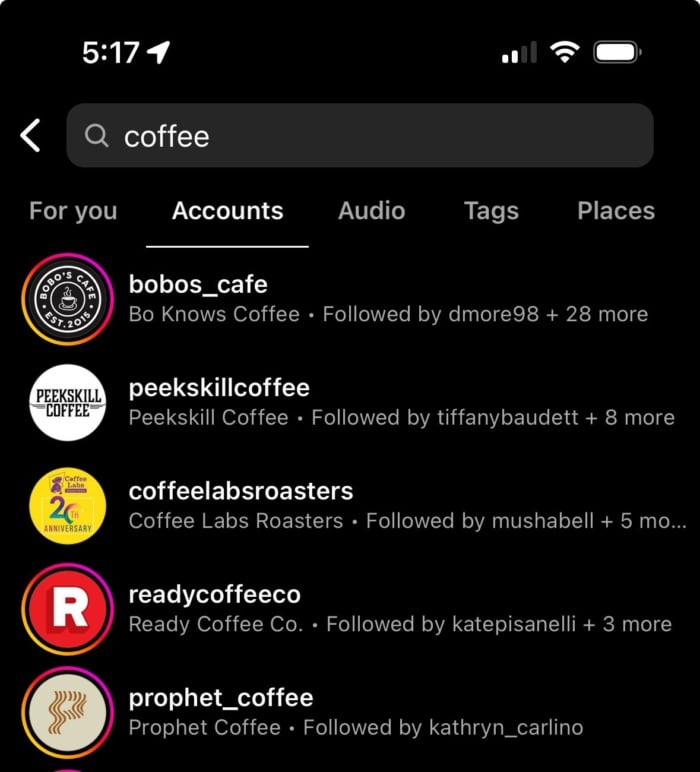
What you’re doing is a local search, and your results will likely include coffee-related pages you follow, popular coffee accounts, and coffee places nearby—like in the example above. This is a hyperlocal search in action.
Why Hyperlocal Marketing on Social Media Matters
- Inspiration-Driven Audience: 27 percent of people use social media for inspiration on things to do and buy. If your business isn’t visible in these searches, you’re missing out on a huge opportunity.
- Local SEO Optimization: You need to optimize your business profile to be among the top results when locals are searching for what you offer.
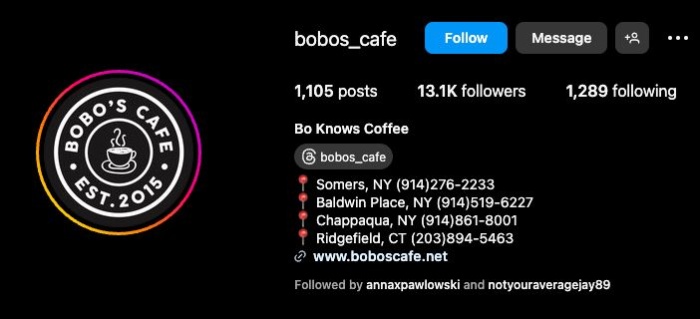
So, if you have a business that can benefit from attracting a local clientele—whether it’s a cozy café, a boutique store, or a local service—you need to put your business on the local map, both literally and figuratively.
How to Develop Your Hyperlocal Strategy
Developing a hyperlocal strategy is like crafting a custom suit—it needs to fit your business perfectly. Let’s break down the steps to tailor a strategy that fits just right.
Identify Your Target Audience
First things first, pinpoint where you want to make your mark, aka your target audience. Is it the bustling streets of downtown, a cozy suburb, or maybe a specific city block? Think about where your business can shine the brightest. For example, a local coffee shop would focus on the immediate neighborhood, while a B2B service might think of a larger metro area.
Questions to Ask Yourself:
- Primary Geographic Focus: Which specific area aligns with your business goals? Is it a particular neighborhood or a larger city sector?
- High Engagement Locations: Where have you seen the most interest in your products or services? Analyze past customer data to find these hotspots.
- Local Demographics: What’s the age, gender, income level, and other demographic details of your target area? Understanding this helps tailor your message.
- Local Interests and Preferences: What do locals love? What are their pain points? Dive into local trends, events, and activities to create resonant content.
- Competition Landscape: Who are your main competitors in this location? Sometimes, targeting areas near them can be a smart move.
Know Your Competition
Knowing your competitors is like having a map in a treasure hunt—it guides you to where you need to go. Here are some ways to understand where they’re investing in hyperlocal marketing.
Analyze the Market Landscape
- Identify Your Main Competitors: Start by identifying your main competitors in your specific location. This could be the café down the street, the boutique around the corner, or any business that vies for the same local audience as you.
- Study Their Strategies: Pay close attention to how they market themselves. What kind of local events do they sponsor? How do they engage with the community on social media? What kind of promotions are they running?
- Target Their Location: If your competitor’s store is close to yours, consider targeting the same area. It’s not about competition—it’s about positioning yourself where the demand already exists.
Conduct a Thorough Competitor Analysis
- Out-of-Home Advertising: This is a goldmine of information. How are your competitors using billboards, local signage, or public transport ads? These ads can reveal a lot about their target audience and marketing strategies.
- Social Media Insights: Dive into their social media platforms. What posts are getting the most engagement? What hashtags are they using? What kind of content resonates with their audience?
- Promotions and Offers: Keep an eye on the type of promotions they offer. Do they have weekly specials, seasonal discounts, or loyalty programs? Understanding this can help you craft compelling offers to attract their customer base to your business.
- Community Involvement: Are they involved in local charity events, school programs, or local festivals? Community involvement can be a significant factor in building customer loyalty and brand awareness.
- Customer Reviews and Feedback: Check out what customers are saying about them online. This can provide invaluable insights into what the local audience appreciates and what they might be missing out on.
Leverage the Gaps
Once you clearly understand your competitors’ strengths and weaknesses, it’s time to act. Use this information to fill in the gaps. If there’s a service they’re not offering or a market segment they’re overlooking, make that your focal point. For example, if your competitor’s café is known for its coffee but not its pastries, perhaps it’s time to introduce a line of mouth-watering, locally-inspired baked goods at your place.
Create Hyperlocal Content
Creating hyperlocal content is like speaking the language of your neighborhood. It’s about crafting messages that resonate deeply with the local community, echoing their everyday experiences, challenges, and joys.
Tailor Your Message
- Localize Your Content: Start by weaving the name of the area into your copy. Mention local events, shout out neighborhood heroes, or discuss issues that matter to the community. This simple tweak can make your content more relatable and engaging.
- Address Local Needs and Desires: Dive into what’s unique about your location. Does your area have a famous food scene, a beloved sports team, or a renowned cultural event? Create content that reflects these unique aspects. For example, share playlists or feature local artists if you’re in a city known for its music scene.
Tips for Crafting Hyperlocal Content:
- Mobile Optimization: Most of your audience is likely scrolling on their phones. Ensure your content looks great on small screens.
- Use hyperlocal geolocation tags: Tag your posts with local places on platforms like Instagram. This increases the chances of locals discovering your content.
- Localized Visuals: In your visuals, feature local landmarks or cultural elements. This could be a well-known street, a popular local hangout, or even regional architecture.
- Promote Localized Offers and Deals: Drive foot traffic with exclusive local deals. Highlight these offers with attractive graphics and clear details.
- Show Community Participation: Share your involvement in local events and activities. Whether it’s sponsoring a little league team or participating in a community festival, let your audience see your commitment to the community.
- Hyperlocal Landing Pages: Each campaign should have its own landing page, tailored to the local audience with relevant information and calls to action.
- Time-Sensitive CTAs: Use phrases like “Hurry, limited offer!” to create urgency and prompt quicker responses from your audience.
- Local Hashtags: Use hashtags specific to your area. These could be as simple as #[YourCityName] or something more niche that resonates with your local community.
Integrate Hyperlocal Elements in Your Social Media Ad Strategies
When you think about social media ad strategies, it’s about the finer details that make your ads hyperlocal. This could involve using geo-targeted hashtags, creating ads highlighting local landmarks or events, or even crafting exclusive offers to your local area.
Engage in the Local Narrative
Creating hyperlocal content is about more than just selling products or services; it’s about becoming a part of the local narrative. It’s about understanding and reflecting the heartbeat of your area in every post, story, and tweet.
By tapping into the unique rhythm of your locality, you can create content that doesn’t just reach people—it speaks to them. So, get out there, listen to the stories your neighborhood is telling, and echo them in your hyperlocal content strategy. This is how you turn your brand into a beloved local icon.
Partner With Local Influencers and Businesses
Local influencers and businesses can be a massive boost to your credibility and visibility. Have them share their experiences at your store or review your products. Even just featuring familiar local faces on your social media can create a buzz and draw people in.
Encourage your customers to share their experiences and tag your business. Reposting these as social proof can be incredibly effective in building trust and attracting more locals.
Maintain Social Media Marketing Best Practices
Blending the uniqueness of the local approach with the fundamentals of social media best practices in hyperlocal social media marketing is crucial. Here’s how you can strike that perfect balance:
1. Define Your Goals and Objectives
Before diving in, ask yourself:
- What’s your primary aim? Is it increasing brand awareness, driving traffic, or generating leads?
- Who are you targeting? Understand your audience and budget.
- What does the competitive landscape look like on social media?
- What are your Key Performance Indicators (KPIs)? Define these to track your campaign’s success.
A clear set of goals will steer your strategy in the right direction, ensuring every action has a purpose.
2. Understand Your Target Audience
This is non-negotiable. Knowing who you’re talking to is key to creating content that resonates. Dive deep into their demographics, interests, and behaviors. This understanding will help you craft relevant content, target your advertising effectively, and offer stellar customer service.
3. Select the Right Social Media Platform(s)
Each platform has its unique vibe and audience. Pick the one that aligns best with your brand and target audience. For instance, Instagram and TikTok are great for a younger, more visually-driven audience, while LinkedIn might be better for professional services. Use persona-based research to nail down where your audience hangs out.
4. Create a Solid Content Strategy
Plan your content meticulously. A solid content strategy includes:
- Consistent Delivery: Establish a regular posting schedule with a consistent tone and voice.
- Audience Relevance: Align your content with what your audience finds engaging and valuable.
- Optimization for Search and Social Media Algorithms: Increase your visibility and reach.
5. Use Eye-Catching Visuals
Humans are visual creatures. High-quality, visually appealing content grabs attention and boosts engagement. Ensure your visuals are on-brand, mobile-friendly, and subtly incorporate your logo.
6. Schedule Your Posts in Advance
Plan your content calendar, choose a social media management tool, determine your posting frequency, and schedule your posts. This ensures a consistent presence and saves you time.
7. Engage With Your Audience
Social media is a two-way street. Engage by responding to comments, starting conversations, and posting interesting, informative, and entertaining content. Personalize your responses and set internal goals for response times.
8. Analyze Your Results
Finally, always keep an eye on your campaign’s performance. Key metrics to monitor include engagement rate, click-through rate, sentiment analysis, and ROI. Use these insights to tweak and improve your strategy continually.
Examples of Hyperlocal Social Media Marketing
Let’s dive into some real-world examples of hyperlocal social media marketing done right. These brands have mastered the art of local engagement and serve as a blueprint for those looking to make a significant impact in their local communities.
Bobo’s Coffee and Brunch
https://www.instagram.com/reel/Cw2kytQu5ny/?igshid=MzRlODBiNWFlZA%3D%3D
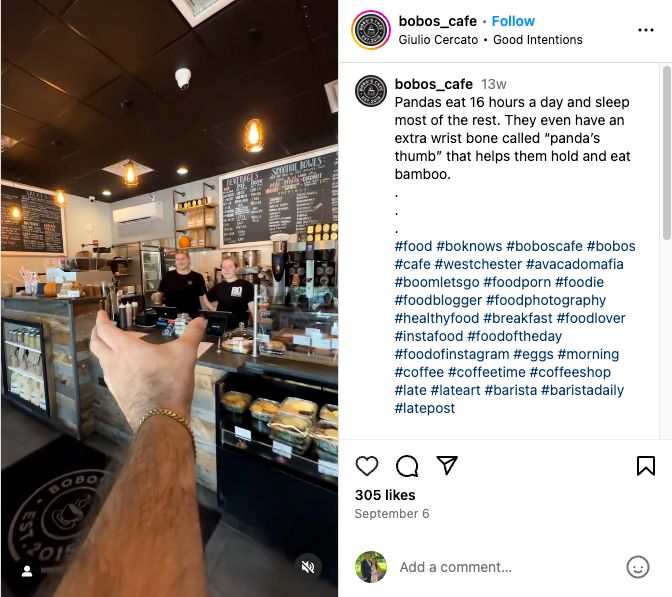
Bobo’s, a local Putnam County, New York coffee and brunch hotspot, is a fantastic example of hyperlocal social media marketing. Their strategy is a mix of showcasing mouth-watering food, a dash of humor, and smart use of social media tools.
- Content Strategy: They primarily use Reels to engage their audience. This format’s dynamic and interactive nature allows them to present their offerings in an engaging and visually appealing way.
- Geo-Targeted Hashtags: By leveraging local hashtags, they ensure their content is easily discoverable by the local community.
- Broad Appeal: Despite having four thriving locations, they maintain a community feel, appealing to an audience of all ages. This demonstrates their understanding of different demographic preferences within their local communities.
- Engagement Approach: Their content often includes humor, making their social media presence informative and entertaining.
The Bouqs Company in Chicago
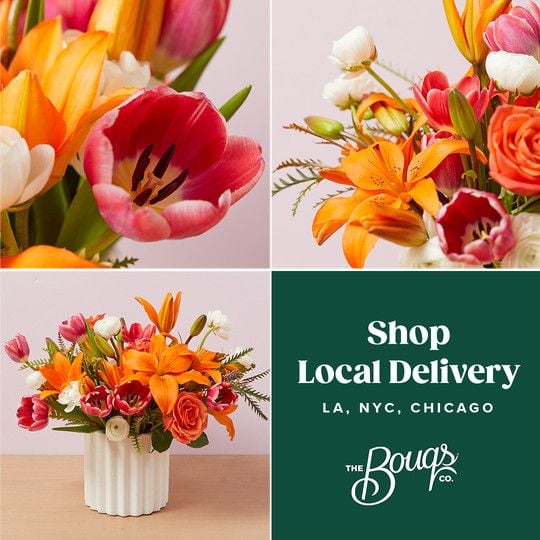
The Bouqs Company, known for its fresh and elegant floral arrangements, shows how effective hyperlocal marketing can resonate with a specific urban audience (Chicago).
- Tailored Content for Chicago: They announce their presence in the city with content that speaks directly to Chicagoans. This includes highlighting local landmarks or cultural elements in their visuals and promotions.
- Invitation to Shop Online or In-Store: By providing both online and physical shopping options, they cater to the convenience of their local customers. This dual approach helps capture both foot traffic and online sales.
- Sense of Exclusivity: By creating a campaign specifically for Chicago, The Bouqs Company gives local customers a feeling of exclusivity, as if these offers are tailored just for them.
Tim Hortons Cafe and Bake Shop in Texas and Georgia
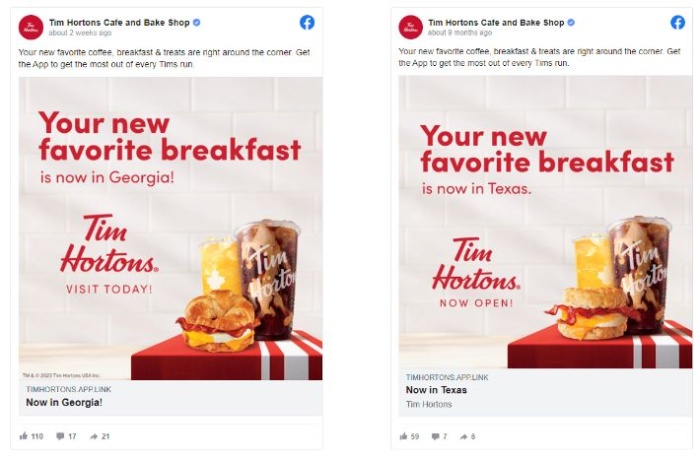
Tim Hortons, a renowned Canadian chain, has made remarkable strides in establishing a ‘local’ presence in areas like Texas and Georgia, where it’s traditionally not seen as a local brand. Here’s the twist in their strategy:
- Overcoming regional perceptions: The challenge for Tim Hortons in these Southern states was to transcend its identity as a Canadian brand and embed itself into the local culture.
- Tailoring to local tastes: They achieved this by focusing on the specific tastes and preferences of the Southern audience. By adapting their menu and marketing to highlight items that appeal to local tastes, they positioned their offerings as enticing and familiar to the community.
- Engaging with southern charm: Tim Hortons fostered a sense of local familiarity by sparking curiosity and anticipation through their content. They crafted a narrative that made the brand feel like a neighborly presence, a coffee shop that’s ‘just around the corner.’
- Synchronizing with community events: They aligned themselves with local events and trends, demonstrating an understanding and appreciation of the local culture. This strategic integration helped position Tim Hortons as a part of the local community fabric in Texas and Georgia.
Through these efforts, Tim Hortons has skillfully navigated the challenge of introducing a Canadian brand into the Southern U.S., making it feel like a local favorite rather than a foreign import.
FAQs
What is hyperlocal social media marketing?
Hyperlocal social media marketing is a strategy that focuses on tailoring your marketing efforts to a very specific, localized audience. It involves creating content and campaigns that are directly relevant to a local community, neighborhood, or even a specific street. This approach helps businesses connect more personally with their target audience, leading to increased engagement and conversions.
What is an example of hyperlocal targeting in marketing?
A classic example of hyperlocal targeting is a local café using Instagram Stories to promote a happy hour deal to users within a 5-mile radius. They might use geotags for their location and hashtags relevant to the neighborhood to ensure the promotion reaches potential customers nearby.
What are the cons of hyperlocal marketing?
The main drawback of hyperlocal marketing is its limited reach. You can miss out on a broader audience by focusing on a small geographic area. Additionally, it requires a deep understanding of local preferences and cultural nuances, which can be challenging to gather and interpret accurately.
What is the difference between local and hyperlocal SEO?
Local SEO optimizes your online presence to attract more business from relevant local searches. This typically involves a broader area like a city or region. Hyperlocal SEO, however, drills down further to target very specific locations like neighborhoods or streets. It’s about being the top choice for extremely localized searches.
What platforms and tools are commonly used for hyperlocal social media marketing?
Popular platforms for hyperlocal social media marketing include Instagram, Facebook, and TikTok, where businesses can use geotags and local hashtags. Tools like Hootsuite or Sprout Social are useful for managing and scheduling content, while Google Analytics and Facebook Insights provide valuable data for understanding local audience behavior.
Are there specific industries or businesses that are well-suited for hyperlocal marketing?
Yes, certain industries particularly benefit from hyperlocal marketing. These include:
Retail Stores and Boutiques: Attracting nearby customers with promotions and in-store events.
Restaurants and Cafés: Promoting daily specials or events to local foodies.
Service Providers (like plumbers, electricians): Targeting homeowners in specific neighborhoods.
Real Estate Agents: Focusing on specific areas or communities.
Local Artisans and Craftsmakers: Connecting with a community that values local craftsmanship.
Conclusion
And there you have it, the ins and outs of hyperlocal social media marketing. This approach is about deepening your connection with the surrounding community. It’s about understanding the unique heartbeat of your local area and aligning your content marketing efforts to resonate with that rhythm.
Whether you’re running a cozy café, a budding boutique, or offering specialized local services, hyperlocal social media marketing offers a unique opportunity to connect with your audience on a more personal level. It allows you to tailor your message, be part of local narratives, and ultimately, become a beloved and recognized part of your community.
So, as you begin or continue your journey with local social media marketing, remember the power of the local touch. Embrace your area’s uniqueness, engage authentically with your community, and watch your local presence transform into local loyalty.
Source: neilpatel.com

